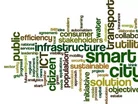Gartner says smart cities will use 1.1 billion connected things in 2015

Increasing urbanisation is putting unprecedented pressure on city mayors to constantly balance the challenge of resource constraints against environmental sustainability concerns. Gartner, Inc. estimates that 1.1 billion connected things will be used by smart cities in 2015, rising to 9.7 billion by 2020.
Smart homes and smart commercial buildings will represent 45 percent of total connected things in use in 2015, due to investment and service opportunity, and Gartner estimates that this will rise to 81 percent by 2020. "Smart cities represent a great revenue opportunity for technology and services providers (TSPs), but providers need to start to plan, engage and position their offerings now," said Bettina Tratz-Ryan, research vice president at Gartner.
Gartner defines a smart city as an urbanised area where multiple sectors cooperate to achieve sustainable outcomes through the analysis of contextual, real-time information shared among sector-specific information and operational technology systems.
"The majority of Internet of Things (IoT) spending for smart cities will come from the private sector. This is good news for TSPs as the private sector has shorter and more succinct procurement cycles than public sectors and cities," said Ms. Tratz-Ryan.
Residential citizens will lead the way by increasingly investing in smart-home solutions, with the number of connected things used in smart homes to surpass 1 billion units in 2017. Connected things include smart LED lighting, healthcare monitoring, smart locks and various sensors for such things as motion detection or carbon monoxide. Smart LED lighting will record the highest growth of IoT consumer applications, from 6 million units in 2015 to 570 million units by 2020. Light will move from being an illumination source to a communications carrier incorporating safety, health, pollution and personalised services. "Homes will move from being interconnected to become information- and smart-enabled, with an integrated services environment that not only provides value to the home, but also creates individual-driven ambience. The home will become the personal space that provides assistance or personal concierge experiences to the individual," said Ms. Tratz-Ryan.
In addition to residential IoT investments, there are a number of IoT deployments for on-street and off-street parking guidance, road traffic guidance and traffic flow metering. A quick win within transport is the reduction of traffic congestion. California and the U.K. are already implementing radio receivers or sensors that are embedded on a section of highway to diagnose traffic conditions in real time. Another successful use of IoT in the city is smart parking. The city of Los Angeles, for example, has been implementing new parking meters, parking space vehicle sensors, real-time parking guidance and a full parking management system to influence demand during peak times.
"Electric mobility, charging stations and embedded IoT will generate additional IoT opportunities in smart cities," said Ms. Tratz-Ryan. "This could be, for example, IoT in vehicles, or vehicle batteries sensing and communicating with the driver, or the next charging station to negotiate charging terms." New and transformative business environments and ecosystems will emerge. For instance, automobile companies are investing in streetlights with charging stations embedded in the post to reduce the infrastructure investment for automobile charging stations. Sensors allow these companies to identify vacant charge-parking spaces for their customers, communicated via mobile applications and on-board systems. They will also be the facilitators of the payment and transaction for ease of use.
While investment in IoT hardware is fundamental for smart cities, the real revenue opportunity for TSPs is in the services and analytics sector. "We expect that by 2020, many IoT TSPs will have grown their hardware revenues through services and software by more than 50 percent," said Ms. Tratz-Ryan. Gartner also estimates that smart-home security and safety will represent the second-largest service market by revenue in 2017, and that by 2020, the smart healthcare and fitness market will have grown to nearly $38 billion."
"We expect commercial IoT implementations to be used across multiple industries, such as smart energy, environmental service or journey planning, which will offer TSPs the opportunity to monetise IoT by building IoT-related service models," concluded Ms. Tratz-Ryan. "Significant value contribution will come from information and data analytics of IoT, which connect services to third-party transactions and billing records, as well as enabling subscriptions or on-demand services. This enables a multidimensional value chain with different partners."



